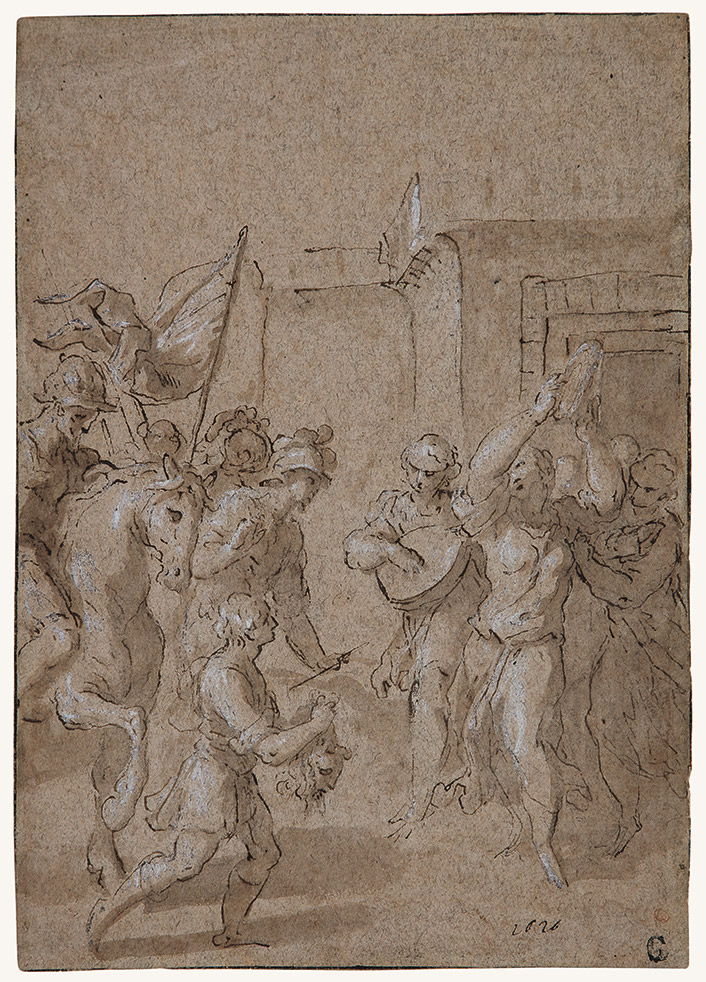Jacopo Negretti called Palma il Giovane
Venice 1548 – 1628
1626
294 x 210 mm
Dated 1626 lower right, framed in brown ink
Provenance: Collection William Bates, 1824-1884 (L.2604), professor at the College in Birminghan, he created a very important collection of Old Master Drawings, sold by Sotheby in London on 25 February, 1886; lower right another collection mark not identified (L.474); Albert Aaron Feldman (L.4812) mark erased.
Our David Triumphant, is dated at bottom right 1626 and belongs to Palma’s late period, as shown by the light drawing lines and the widespread ‘macchia’ of the wash. These characteristics are found in other drawings of the same period such as the St. Peter walking over the waters in the Uffizi (n. 7873 S) and the Marriage of Cana, dated by Palma 1627 zenaro, published by Tietze as the Last Supper (H. Tietze E. Tietze Conrat The Drawings of the Venetian painters, New York, 1979, no.1006).
Palma painted this subject twice: one canvas, which bears the date of 1595 is in the church of S. Zaccaria, in Venice, the other is in the Museo del Prado, in Madrid. Our drawing is from the later period, towards the end of Palma’s life, when the artist resumes themes of works of his youth.
Information on the master
Palma, born in the Venetian family of artists, was the nephew of the painter Palma il Vecchio and the son of Antonio Negretti, a minor painter pupil of Bonifazio de’ Pitati who inherited his shop.
In 1567 the Duke of Urbino recognized Palma’s talents sending him to Rome, where he remained until 1573 ca. He returned to Venice by the mid -1570 ca. The first major commission arrived after 1577 in the Doge’s Palace: three scenes in its grand council hall.
After Tintoretto’s death in 1594, Palma became Venice’s leader artist.
